Botanist, gardener, agronomist and designer of nurseries and gardens
Frederick of Germany was not the first illustrious German to arrive in Sanremo. When we talk about Germans on the Riviera, one of the names that comes most often to mind is that of Ludwig Winter: a gardener with a capital letter because of his great technical knowledge and artistic sensitivity and because of his vast cultural background in botany, ecology, agronomy and landscaping.
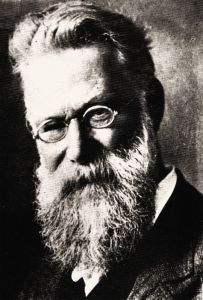 Ludwig Winter was born on 9 August 1846 in Heidelberg, Baden-Württemberg.
Ludwig Winter was born on 9 August 1846 in Heidelberg, Baden-Württemberg.
Ludwig was born in the kingdom of Prussia. His father Antonio was a bookseller at the famous University of the Grand Duchy of Baden and his mother Emilia was an accomplished painter. At the age of 12 he settled in Leipzig with his family and that same year his father died. His mother, left alone, looked after the five children using her talents as a painter, but the family's financial resources were scarce. At the end of school Ludwig, who had shown a great love for the study of botany from a young age, moved to Erfurt, the German city of flowers, where he continued his studies and immediately found employment with the Jülke company, remaining there for two years.
He then moved on to the "Horticultural School" in Potsdam, before going in 1866, as first gardener, to the Botanical Garden of Poppelsdorf, near Bonn, famous for its tropical plants.
In 1867 he went to Paris to visit the Exposition Universelle. Having fallen in love with the French capital, he decided to settle there and worked first as a simple gardener's labourer at the Antoine Chatin company, specialising in palm cultivation, and then as a gardener in the Tuileries Park.
The arrival of the Franco-Prussian war prompted him to leave and after some brief work experience in Cannes and Marseilles he moved to Hyères, where he managed to get employed by Charles Huber's company as a hybridiser. Here the Charles Huber company was about to launch one of its creations, a beautiful anemone. It was Winter who produced the design of this marvellous flower, which was a great success in Europe. After this first, brilliant proof, Huber employed him as a flower designer and it was Huber who, recognising Winter's above-average abilities, put him in touch with Thomas Hanbury (1832-1907).
The meeting with Hanbury turned his life around.
So the definition of a German on the Riviera in the case of Ludwig Winter fits perfectly, as he got to know the various places in this corner of Liguria very well.
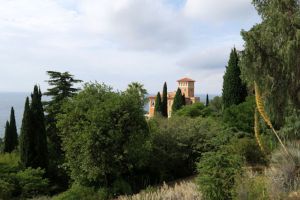 Thanks to Charles Huber, in 1869 Winter, at the age of only twenty-three, had the opportunity to create an important botanical garden with considerable
Thanks to Charles Huber, in 1869 Winter, at the age of only twenty-three, had the opportunity to create an important botanical garden with considerable 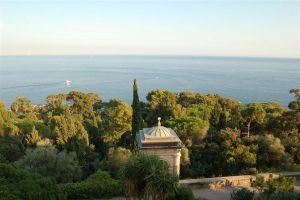 financial means and to come into contact with the botanical skills of the Hanbury family, in particular Daniel Hanbury, a world-famous scientist and a formidable connoisseur of the plant world.
financial means and to come into contact with the botanical skills of the Hanbury family, in particular Daniel Hanbury, a world-famous scientist and a formidable connoisseur of the plant world.
Winter's work on the Hanbury Botanic Gardens ended in 1875, after only six years, when Winter was not yet thirty. Winter's character, his seriousness, competence and industriousness were greatly appreciated by the Hanbury family. Winter is known everywhere for having spread and enhanced the value of palms in gardens, on the waterfront and, more generally, in the Riviera and coastal landscape of central and northern Italy.
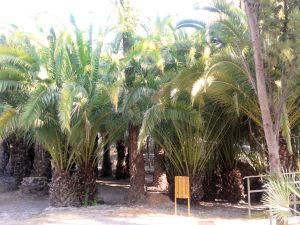 Winter's regard for palm trees was not fully shared by Thomas Hanbury. Thomas did not like palm trees, at least not as much as Winter did, and this was perhaps one of the reasons that contributed to the split.
Winter's regard for palm trees was not fully shared by Thomas Hanbury. Thomas did not like palm trees, at least not as much as Winter did, and this was perhaps one of the reasons that contributed to the split.
Winter saw the economic prospects of the Riviera in the horticultural sector. He developed, with excellent results, the cultivation of the "Safrano rose", created in France in 1839 and introduced for the first time in the Latte di Ventimiglia area by the Enrico Notari company from the border town.
He also promoted the cultivation of the "Tea Mademoiselle Marie van Houtte" rose, created in 1871 and still considered one of the best in its category for its hardiness, vigour, resistance to disease, intensity of perfume and abundance of flowers.
In Bordighera he worked on the Borghetto Plateau, on the Montenero slope and in the Curtasse area (between Bordighera and Ospedaletti), where he planted the first mimosas.
In Bordighera he set up an elegant flower shop in Via Vittorio Emanuele, and in the garden behind it (where the Cinema Olimpia now stands) he established a permanent exhibition, which featured a wide variety of palm species.
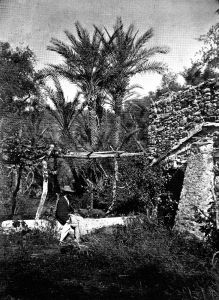 As a landscape architect and garden designer, in 1875 he started the garden in the Vallone del Sasso, planting numerous rare tropical plants, palms and ficus. He subsequently designed several gardens, such as the one at Cap Martin for Empress Eugenia, the one at Villa Zirio in San Remo where Kronprinz Frederick lived, the one at Menton for Countess Foucher de Careil, the one at Bordighera for Villa Bischoffsheim, at Castel di Lama (Ascoli Piceno) for the Carfratelli Seghetti family, as well as his own garden at Madonna della Ruota and, lastly, the public gardens at Ventimiglia, completed several years after his death.
As a landscape architect and garden designer, in 1875 he started the garden in the Vallone del Sasso, planting numerous rare tropical plants, palms and ficus. He subsequently designed several gardens, such as the one at Cap Martin for Empress Eugenia, the one at Villa Zirio in San Remo where Kronprinz Frederick lived, the one at Menton for Countess Foucher de Careil, the one at Bordighera for Villa Bischoffsheim, at Castel di Lama (Ascoli Piceno) for the Carfratelli Seghetti family, as well as his own garden at Madonna della Ruota and, lastly, the public gardens at Ventimiglia, completed several years after his death.
In Bordighera, it was the German Ludwig Winter, a very talented landscape gardener and pioneer of nursery gardening for the production of exotic plants, who initiated a new way of understanding the garden (fig. 9). Great botanists and landscape architects, especially from England and Germany, were competing to assemble the most valuable botanical collections with plants from overseas in their parks. A great variety of exotic plants, flowers and rich botanical collections were patiently collected through journeys to distant lands. The arrival of new plants enabled the creation of extraordinary acclimatisation gardens.
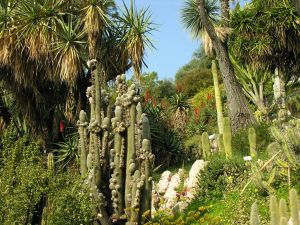 In this respect, the contribution of the botanists Mario Calvino and Eva Mameli, parents of the writer Italo, was great. These veritable oases embellished buildings constructed in the most imaginative eclectic styles and created by the most famous architects of the time.
In this respect, the contribution of the botanists Mario Calvino and Eva Mameli, parents of the writer Italo, was great. These veritable oases embellished buildings constructed in the most imaginative eclectic styles and created by the most famous architects of the time.
Among the most prestigious gardens, in addition to the aforementioned Botanical Garden for Thomas Hanbury at La Mortola, near the border, was Villa Garnier at Bordighera.
In San Remo the work carried out by the German Baron Karl von Hüttner (1822-1886) at villa Parva was very important.
He settled in San Remo in 1883 and was the first real scholar of the flora of the city's (winter) gardens, publishing a book in Leipzig entitled " Gartenflora des klimatischen Winter-Kurorts San Remo " (or The flora cultivated in the balneo-climatic winter resort of San Remo). 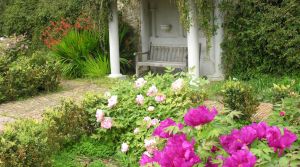 His villa - which still exists today - was located in the old Roverizio private road (today's Via Roccasterone), in the Berìgo area, and was not far from the residence of the famous Countess Adele Roverizio di Roccasterone, one of the promoters of tourism in San Remo. Von Hüttner's villa was certainly a point of reference for German aristocrats on the Riviera.
His villa - which still exists today - was located in the old Roverizio private road (today's Via Roccasterone), in the Berìgo area, and was not far from the residence of the famous Countess Adele Roverizio di Roccasterone, one of the promoters of tourism in San Remo. Von Hüttner's villa was certainly a point of reference for German aristocrats on the Riviera.
A loving husband and father, he took great care of his eleven children, even at an early age, which was rare at the time. All of his children knew how to play an instrument and it is said that in the evenings, if you walked past Villa Sofia in Via Regina Margherita, you could enjoy lovely concerts. Two died in the early years and nine survived: Antonio, Pauline, Rodolfo, Emilia, Giovanna, Constance, Sophie, Hedwig and Clara.
Winter was also a man of generous spirit and sensitive to social issues. The "Casa di Provvidenza" (Providence House) in Bordighera Alta, which was opened in the last years of the 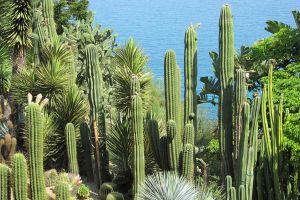 nineteenth century and became a Civic Hospital in 1904, was also built by Winter.
nineteenth century and became a Civic Hospital in 1904, was also built by Winter.
This structure was the result of a great project conceived and carried out by three very singular figures: Winter himself, considered a free thinker and not particularly religious, whose intellectual and moral temperament made him a man who believed in friendship and solidarity; the Franciscan Friar of the Minor Observants Father Giacomo Viale (1830-1912), parish priest of Bordighera for forty-nine years; and Baron Friedrich von Kleudgen (1846-1924), a German and Lutheran Christian, painter and fishing enthusiast, very sensitive to the plight of his neighbours.
His generosity was so appreciated by all the Bordigotti that he was granted honorary citizenship on 30 December 1889 and in 1891 King Umberto I made him a Knight of the Order of the Italian Crown.
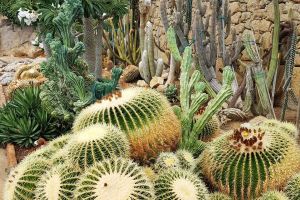 Many of his pupils and men followed in his footsteps, such as the Ronco, Molinari, Allavena and Pallanca families, who still own the famous Pallanca Exotic Garden.
Many of his pupils and men followed in his footsteps, such as the Ronco, Molinari, Allavena and Pallanca families, who still own the famous Pallanca Exotic Garden.
Winter went to Bad Nauheim near Mannheim, also in Baden-Württemberg, with his wife Giustina and daughter Sofia to undergo cardiological treatment, and died of a heart attack on 12 July 1912.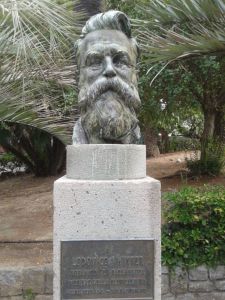 After his death, his son Antonio and his granddaughter Erica, Rodolfo's daughter, took over the nursery at Vallone del Sasso. His son Rodolfo, an engineer and architect, also designed gardens, including those along the seafront in Bordighera, the "Lungomare Argentina". The promenade has a precious collection of Auraucaria Excelsa, registered by the State Forestry Department, which was planted by one of Winter's students, Giuseppe Molinari.
After his death, his son Antonio and his granddaughter Erica, Rodolfo's daughter, took over the nursery at Vallone del Sasso. His son Rodolfo, an engineer and architect, also designed gardens, including those along the seafront in Bordighera, the "Lungomare Argentina". The promenade has a precious collection of Auraucaria Excelsa, registered by the State Forestry Department, which was planted by one of Winter's students, Giuseppe Molinari.
On 17 January 1954, a bust in honour of Ludwig Winter, created by Virgilio Audagna, was unveiled in the gardens behind the town hall in Bordighera in the presence of authorities from Bordighera, France and Germany. Some descendants were also present, including his daughter Paolina Winter Ronco and his granddaughter Erica.
(sources: Wikipedia, notes taken from the book "Sanremo e l'Europa, l'Immagine della Città tra Otto e Novecento" edited by Letizia Lodi; ediz. Scalpendi, 2018)




